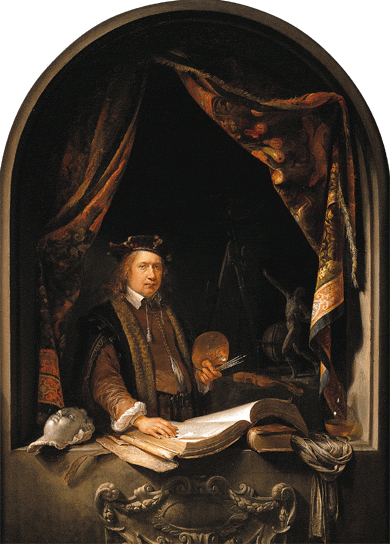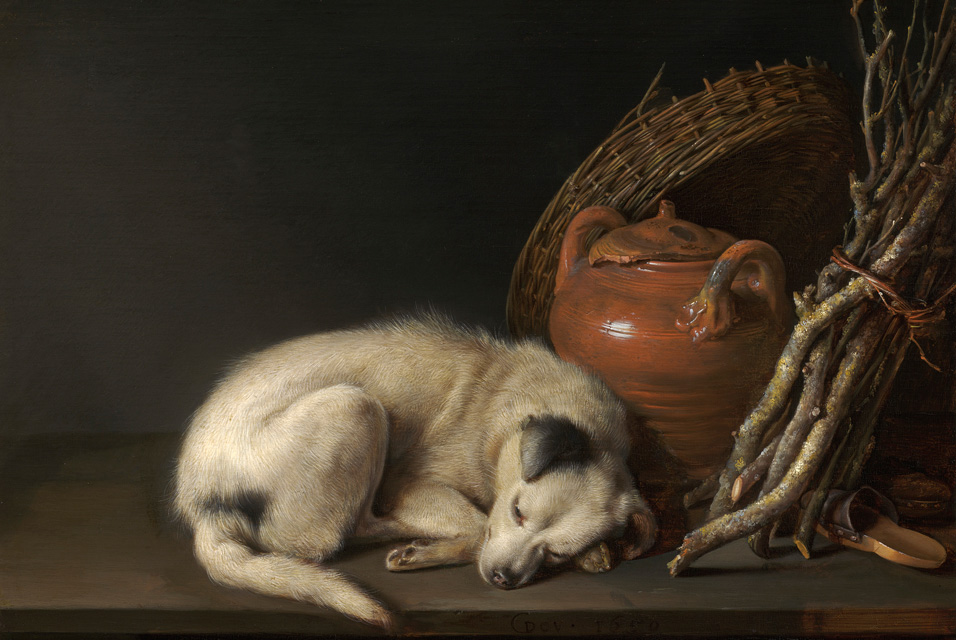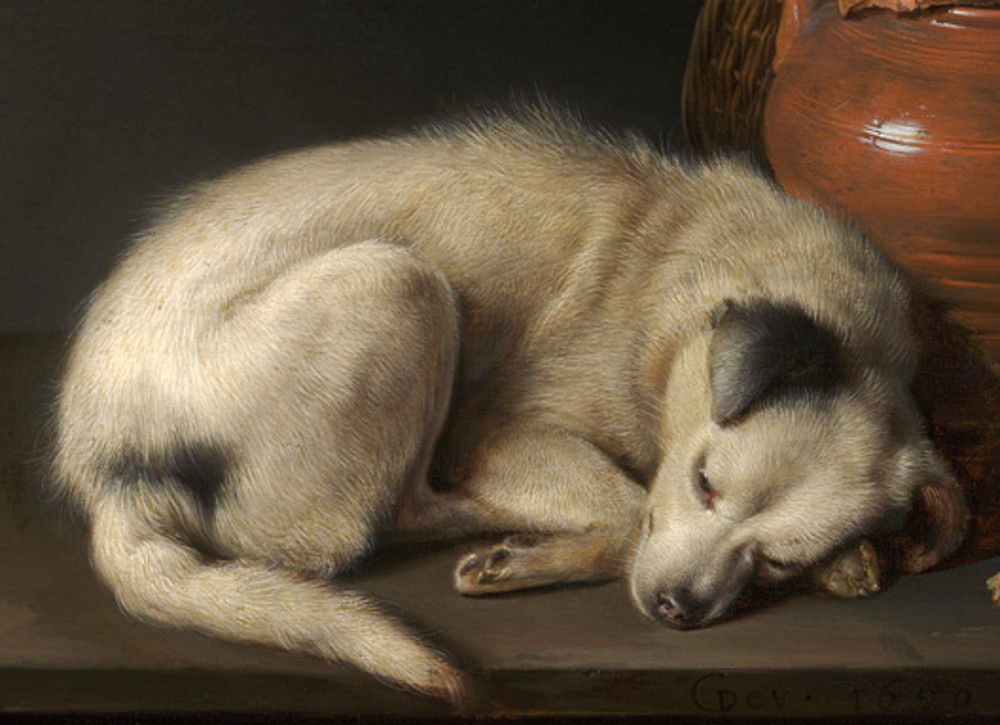Gerrit Dou's Dog A moment of time captured with exquisite skill and grace

“Self Portrait”, 1665
Oil on panel, 23×17 inches / 59×44 cm
Gerritt Dou isn’t a household name, and that’s unfortunate.
He was the foremost of the Leyden Fijnschilders – the group of painters I wrote about last week. Born in 1613, he was a student of Rembrandt for about 3 years. In my unschooled opinion, he rivaled and often surpassed his master.
The exhibit I described in my previous post was of 70 Dutch masterpieces from a private collection – held at the Peabody Essex Museum north of Boston in 2011.
One of the first – possibly even the very first – painting you saw as you entered was a stunning self portrait by Dou. Despite being relatively small, it gave an immediate, commanding impression. It’s painting of the highest caliber.
The real star of the show, however, was this painting by Dou.

“A Sleeping Dog”, 1650
Oil on panel, 6×8 inches / 15×20 cm
I could hardly believe what I was seeing when I turned the corner and was face to face with it.
Small, exquisite, perfect. This jewel box of a painting is only 6 x 8 inches. I’ve literally spent hours in front of it trying to learn everything I could from it.
To begin with, it’s an unusual composition. If you imagine a line from the bottom left corner to the top right corner, everything in the painting is below that line. There’s almost nothing above the line at all.
Except the light.
This painting should feel unbalanced – yet it doesn’t. Dou has managed to give the shaft of light coming from the upper left corner enough substance and drama that it effectively balances everthing happening below the imaginary line.
There’s some real magic in the way he seems to have captured a very specific moment in time.
My dog is considerably larger – a Great Dane. But otherwise, he looks just like this dog.
When something startles him awake, his eyes fly wide open just a split second before he lifts his head in alertness.
As I read it, that is what Dou has captured here. This dog is not drifting off to sleep – its eyes are wide open. Rather, it’s been startled, and is about to spring into action.

Detail from “A Sleeping Dog”, 1650
Oil on panel, 6×8 inches / 15×20 cm
For me, though, the most impressive thing about this painting lies in its approach – the mindset from which this painting came.
There are no tricks, no illusions, no shortcuts, no sleight of hand.
Just patient, exacting, meticulous care, all done in a simple, understated way.
Each hair on the dog was precisely and deliberately painted. As were the strands in the woven basket. As were the lichens on the branches. He’s even touchingly recorded that the dog appears to be suffering from mange – see the abscence of fur along the inner edge of his rear leg.
To me, there’s something very honest and straightforward about it. True painting.
This is the very heart of what these painters – the Fijnschilders – were about.
Quiet, modest, yet utterly spectacular.